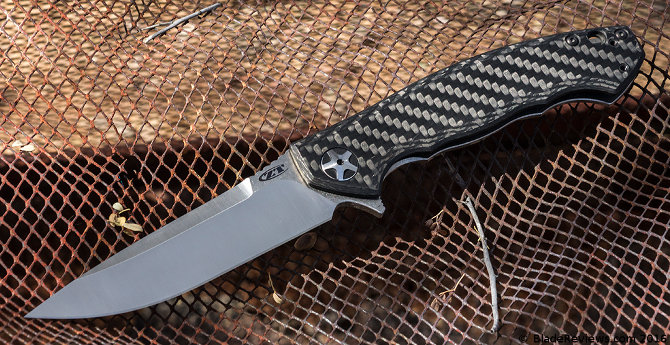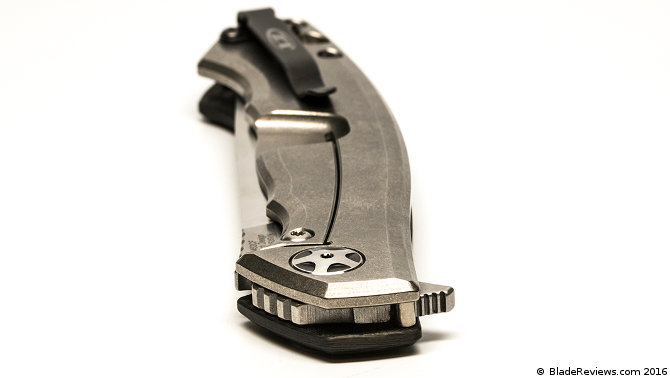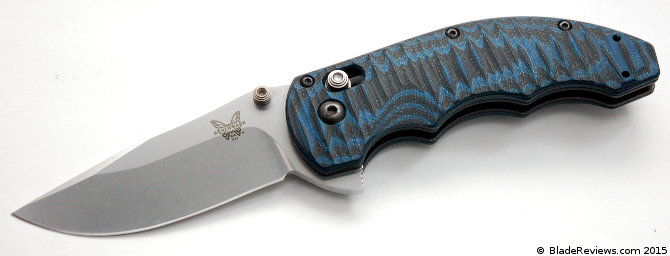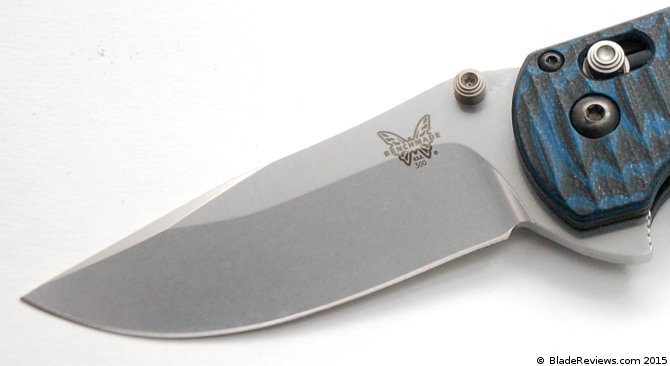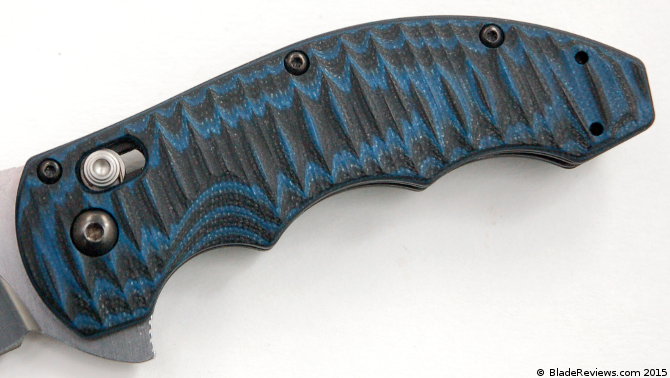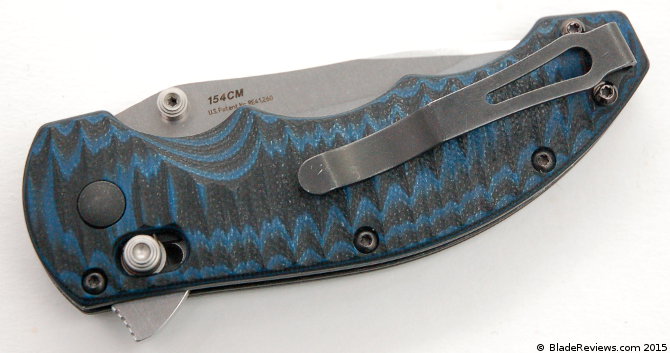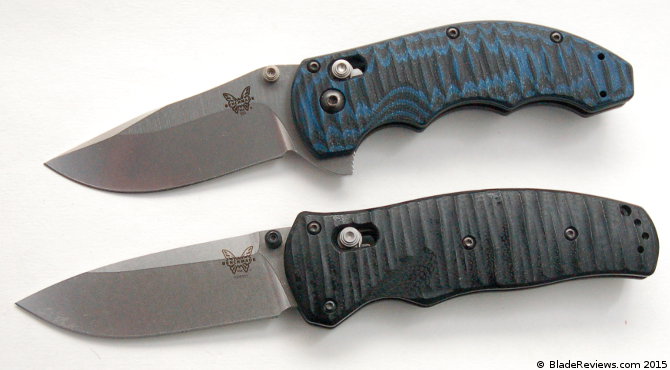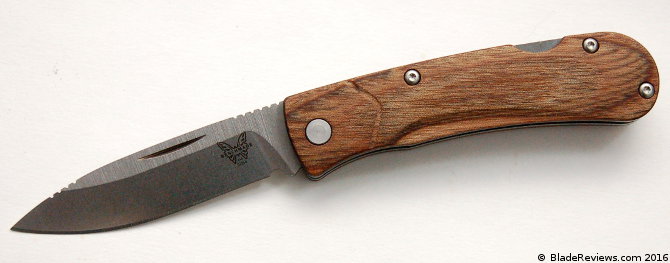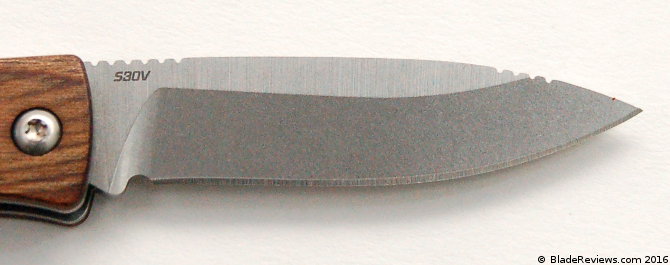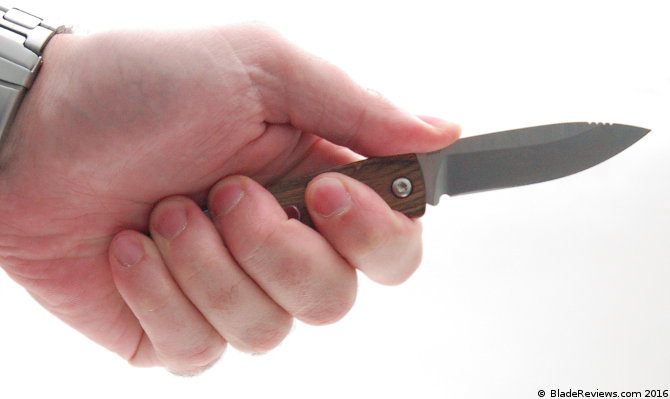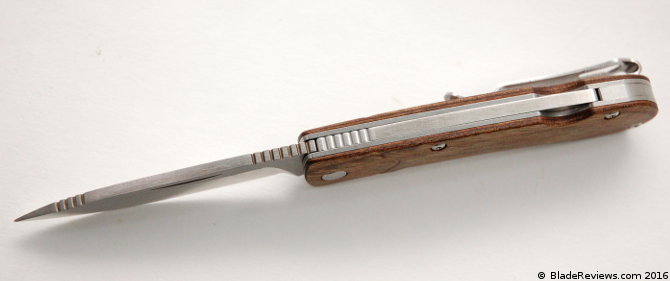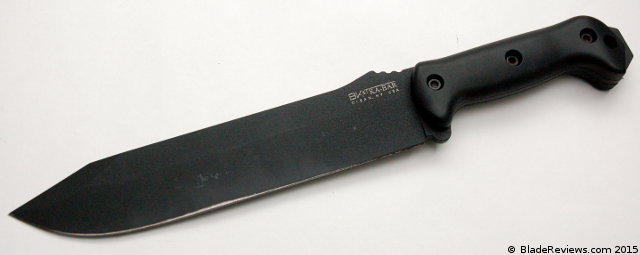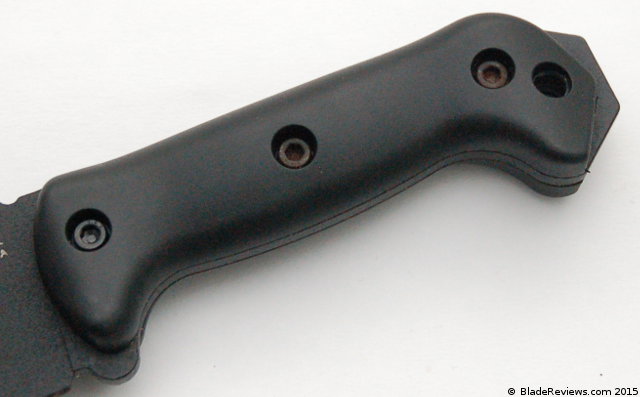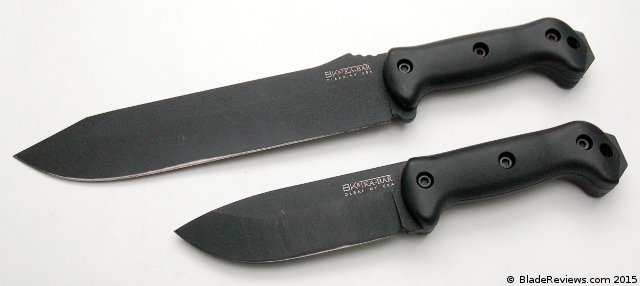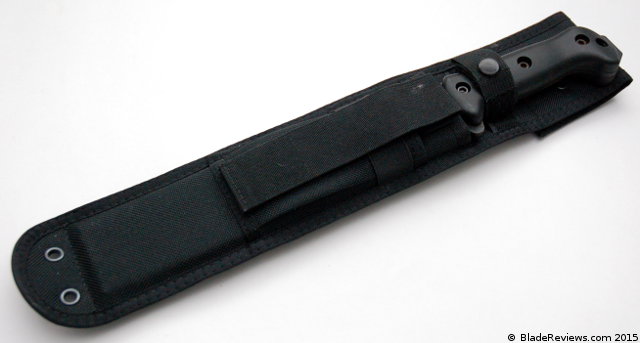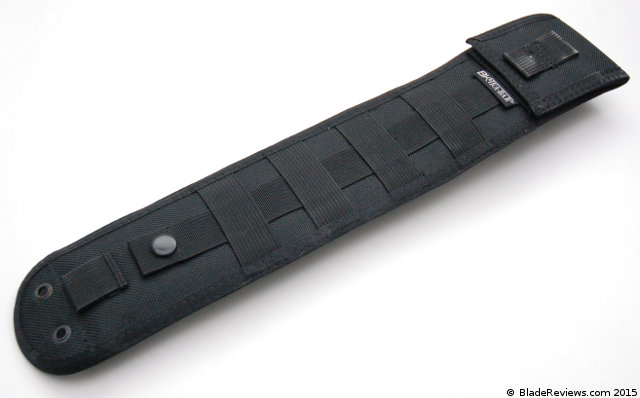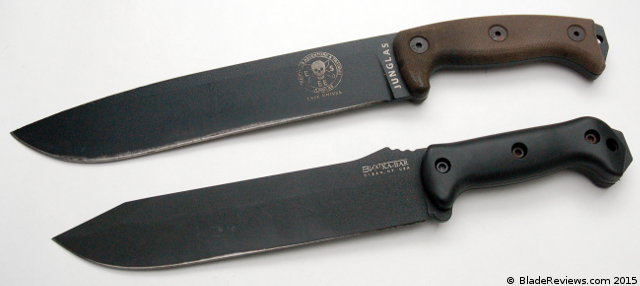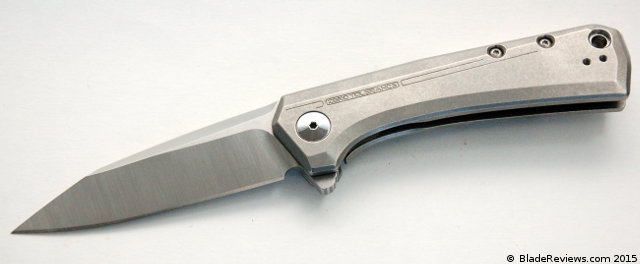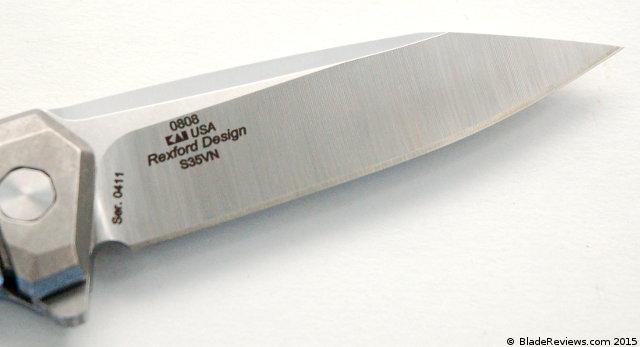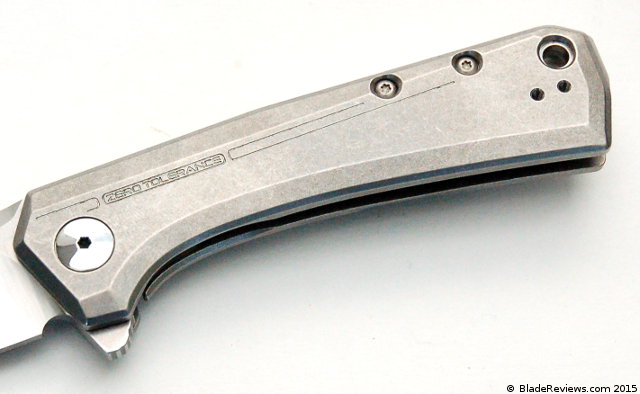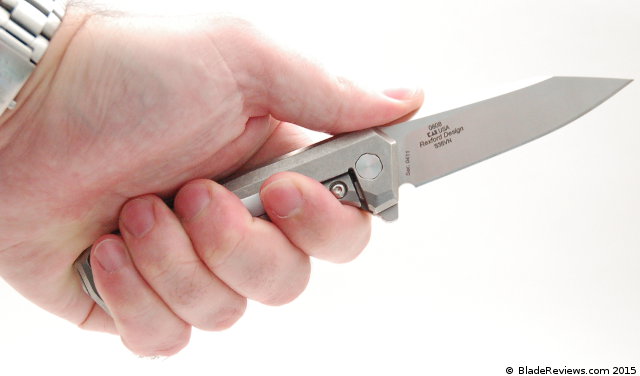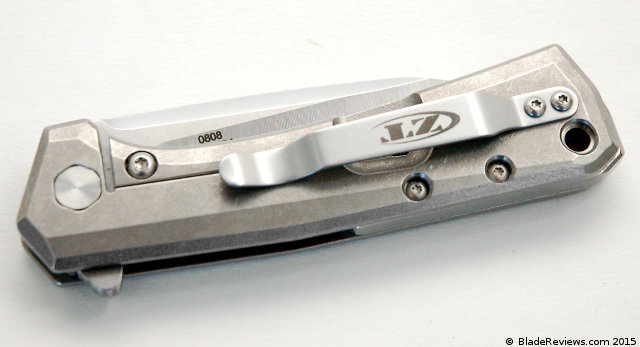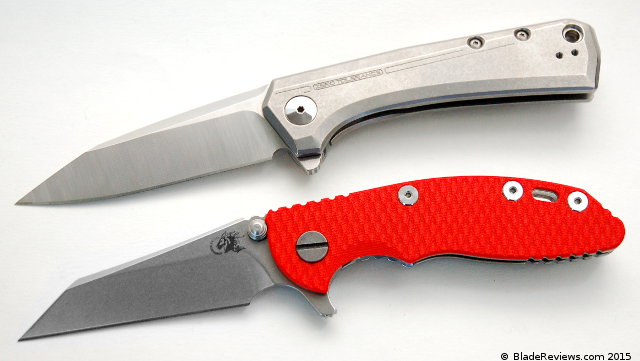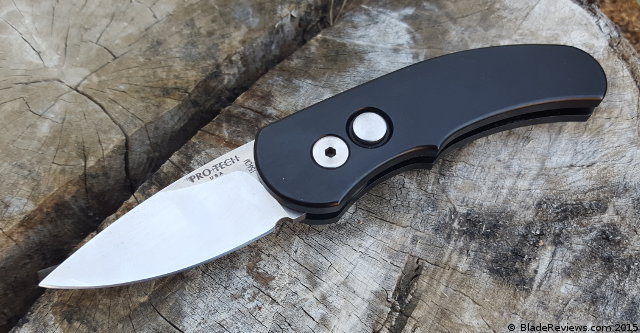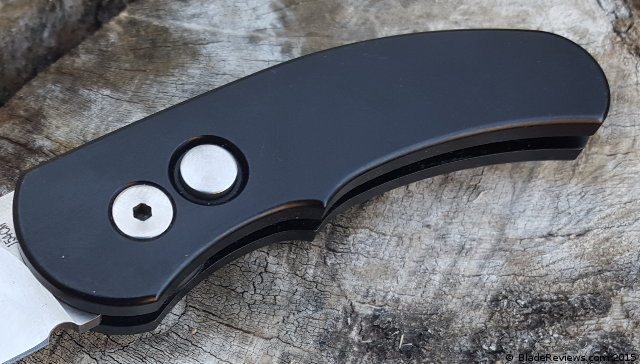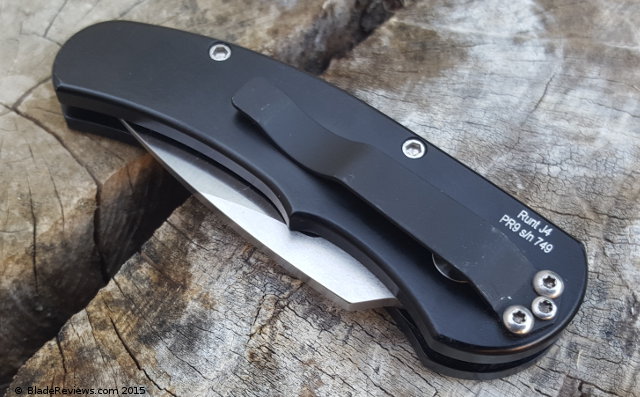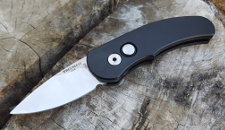When it comes to folding knives, I am extremely selective in what I choose to carry, especially if it is a blade that I am going to carry for self-protection. It has to be light, reliable, sharp, and geometrically efficient. These are just a few of the qualities I look for in a folder. After all, a folding knife is already at a disadvantage over a fixed blade, due to the fact that it has to rely on mechanical functions.
I had been a fan of Zero Tolerance’s quality and construction ever since they came on the market a few years ago, but I wasn’t crazy about their designs. They built tanks, but I wanted something that was as tough as a tank, but as sleek as a Ferrari at the same time. Finally, I discovered the 0452CF.
The 0452CF is a streamlined, mass production version of the award-winning 0454, designed by Dimitry Sinkevich, who is an artist in the realms of both beauty and function. I was instantly drawn to this knife because of its long, narrow blade and slender profile. I had finally found a Zero Tolerance that would suit my personal needs. It was destined to become one of my favorite EDC knives.
General Dimensions and Blade Details
The 0452CF has a blade length of 4.10”, a handle length of 5.17”, an overall length of 9.27”, and is made in the USA. The knife weighs in at 4.64 ounces, which is extremely light considering the size of the knife. In fact, if it were any lighter, it would probably be too light. This knife has just the right amount of weight to it. Plus, it is perfectly balanced right at the first finger grove.
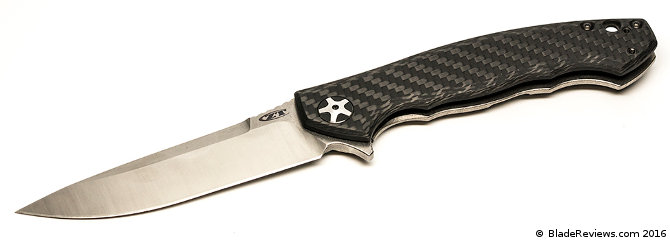
The blade of the 0452CF is a flat-ground, drop point design with a satin finish. The blade is constructed of 0.16” CPM-S35VN. This is an excellent steel made by Crucible and designed specifically for knife making. This steel has excellent properties in the areas of edge retention, toughness, and corrosion resistance, which make it an excellent choice in for an EDC blade.
One of the primary reasons I chose this particular knife as an EDC defensive blade is the blade geometry. The long, narrow drop point with the ¾+ false edge is an excellent thrusting blade. Of course, it does a fine job cutting as well and came razor sharp right out of the box. The 0452CF is just a great all around defensive blade.
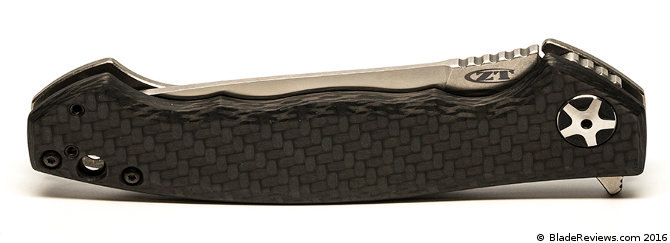
The first thing I did when I took the knife out of the box is do some cutting tests. First, I did a paper test and the blade sliced off slips of paper with laser precision. Then I set up a couple of full 12-ounce water bottles and slashed away at them one at a time. The knife cut almost completely through each water bottle. Very impressive for a 4.1” folding knife!
Handle, Ergonomics, and Pocket Clip
The handle of the 0452CF is carbon fiber on one side and titanium on the other side, which is the reason this knife is so light. It has a slender profile with very subtle finger groves where the index and pinky fingers rest. The curvature at the back causes the handle to sit comfortably in the hand, giving it a subtle forward cant for perfect wrist alignment. When closed, the blade sits so deeply inside the handle that it adds very little to the handle’s profile, resulting in a slender package that tucks nicely along the seam of the pocket.

One of the things I love about Zero Tolerance is their deep pocket clips. This knife is no exception. The deep pocket clip mounted low on the handle allows this knife to sit almost completely concealed inside the pocket. The clip on this knife has a very small signature as well, causing the knife virtually to disappear in the pocket.
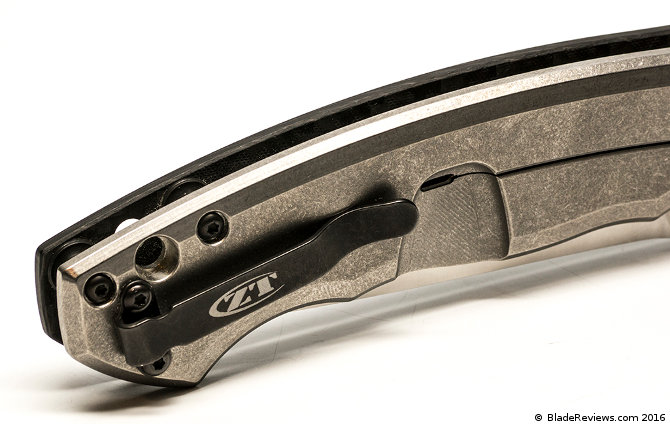
Deployment and Lockup
The 0452CF has a flipper mechanism for quick, one-handed opening. Unlike its 0454 predecessor, the flipper mechanism on this model has some nice jimping to ensure positive finger contact with the flipper. A strong detent system not only locks the blade in place when it is in the closed position, but also adds counter resistance so that the blade launches open when the pressure on the flipper breaks free of the detent.
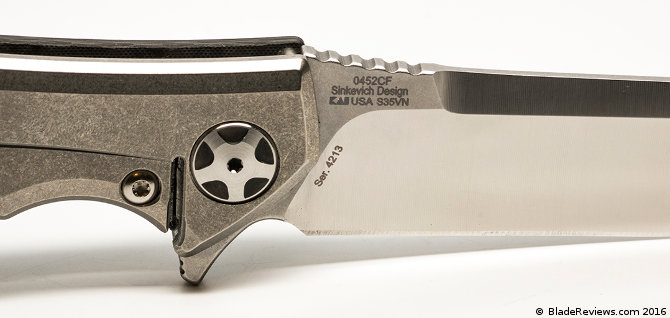
When I first got the knife, the detent was pretty stiff. I had to use a hard wrist flick to open the knife. During the 2016 SHOT Show, a product rep stopped me and asked if he could demo some of his micro-particle oil on my knife. He put a small drop on the detent pin using a needlepoint dropper, and that was all it took to make the blade deploy with a simple flip of the index finger. It has been silky smooth ever since.
The 0452CF employs the KVT (Kershaw Velocity Technology) ball bearing system, which rotates around a large, beautiful five-spoke pivot pin. The titanium side of the handle provides a durable frame lock. Combined with a hardened steel locking bar, the titanium frame lock ensures a solid lock up. I feel very confident with this knife’s locking system.
Zero Tolerance 0452CF Review – Final Thoughts
I am not at all displeased with my Zero Tolerance 0452CF. This knife is everything I expected it would be and more. It has become a regular part of my Every-Day Carry kit. I typically carry multiple knives, but this is the one knife that always goes with me. I have been carrying this knife every day for about 4 months now. It has held its edge like a champ, and the opening has only gotten smoother over time.
I cannot say enough good things about this knife. If you are looking for a high-quality, tactical folder, then you would be doing yourself a favor by purchasing the ZT0452CF. I’m very glad that Zero Tolerance decided to run this production run of the Dimitry Sinkevich collaboration. In fact, not to diminish the artistic beauty of the 0454 in any way, but I would even go so far as to say that some of the features of this production run (i.e. the jimping on the flipper) are upgrades over the original. I have no doubt that others will enjoy this knife as much as I have.
- 4.1-inch S35VN steel blade shows amazing toughness and resistance to edge chipping, with improved edge retention
- Handle features carbon fiber front and titanium stonewashed back for comfortable in-hand feel, increased strength and excellent size/weight proportion
- Handsome, dual blade finish with a non-reflective satin finish on the grind and stonewashed finish on the flats and blade thickness is 0.156 inches
- Great companion for hunters, business professionals, wilderness guides, survival experts, first responders, military, law-enforcement and more
- Ideal gift for any special occasion such as birthdays, holidays, graduations, anniversaries, promotions, weddings and more
I recommend purchasing the ZT 0452CF at Amazon or BladeHQ. Please consider that purchasing anything through any of the links on this website helps support BladeReviews.com, and keeps the site going. As always, any and all support is greatly appreciated. Thank you very much.
